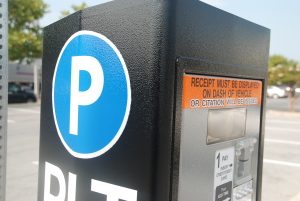
OCEAN CITY – Ocean City’s transportation committee is considering recommendations to upgrade or replace existing payment methods at the Inlet, along streets and in public parking lots.
At Tuesday’s meeting, Public Works Deputy Director John VanFossen presented members with options that could replace faulty equipment, expedite the payment process and allow police to affectively enforce parking rules.
Multiple government agencies, including public works, police, budgeting and engineering departments, created the suggestions for the committee to discuss in the preliminary meeting.
Along the streets and in public parking lots, VanFossen and his team recommended to the committee that the town eliminate the “pay and display” ticket machines for a newer “pay by plate” method, which allows users to purchase time by entering their car’s license plate number.
“We need to look at differences in some newer technology and some of the stuff that is out there on the market,” he said. “When we started many years ago, there were very few players available in the United States. Today there is multiple players and vendors to offer various types of multi-space parking.”
Kevin Kirstein, captain with the Ocean City Police Department, said this automated process would remove any inconsistencies that occur with paper tickets and would make parking enforcement easier.
“’Pay and display’ is wrought with challenges from the police department’s side,” he said. “We really struggle with how you instruct people to display their paid permit.”
In 2015, the town introduced a “pay-by-phone” application, which allows users to pay for parking with their mobile device. According to VanFossen, the “pay by plate” method would closely align with existing technology that these visitors favor.
A majority of visitors who park along the streets and in parking lots use some form of electronic payment, according to VanFossen. More than 84 percent use credit cards and 4.5 percent use the mobile payment application, a number that has doubled from the year prior.
The committee agreed to research the cost of a newer method and will create a proposal request to send to local vendors, contingent on the Mayor and City Council’s approval.
VanFossen estimates the new technology will cost $300,000 to $600,000, but said the committee will have more accurate numbers if they ask vendors to submit proposals.
“Until we ask, we won’t know for sure,” he said.
VanFossen suggested implementing this new transaction system to public parking lots and street spaces by this summer. The new technology could potentially allow the town to charge for handicap spaces, a feature they couldn’t previously implement.
“We are not giving free parking to handicap vehicles because we feel sorry for people with disabilities,” Kirstein said. “We are simply doing it because our equipment is not handicap-accessible.”
In its first and second phases, the committee will also focus on parking operations for the Inlet parking lot.
VanFossen said by updating the Inlet’s payment method, the town will be able to improve wait times at the toll booths and replace aging equipment.
The team suggested making minor improvements for the 2017 summer season, which includes changing the tickets to a bar code system and potentially changing prices to whole dollars. These two changes, he said, could reduce hardware failure and improve transaction times.
By 2018, he said the lot could transition to unattended parking, with multi-space meters and 70 additional parking spots.
Meehan presented the committee with questions that addressed the cost-savings of the proposed plan.
“You take away the cost of the booth operators, but you add in the cost now of enforcement in the Inlet parking lot,” he said. “Do you get full payment for those who park? Today you do going through the gate. You may not with the (new) system. That’s the main thing. That’s the big difference.”
At the conclusion of the meeting, committee members and involved parties agreed to look into the impacts and costs associated with the recommendations before the next meeting.
Also in the meeting, members unanimously elected Meehan to serve as the committee’s chair.

